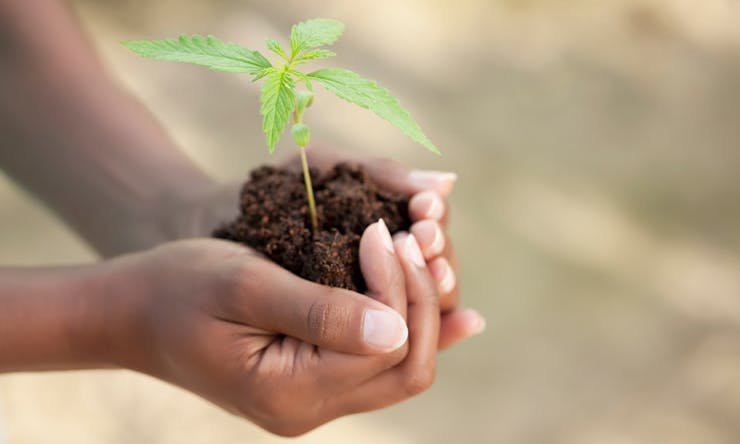In part one of our five part series examining the different factors that impact your cannabis strain, we explained why cannabis genetics are crucial in determining your strain’s end result. Today we’ll be exploring how environmental influences make a difference in the strains you enjoy.
How Does Your Cannabis Plant’s Grow Environment Affect Its End Result?
Once a cannabis seed or clone has been planted, environmental factors begin to assert their force. Indoor and outdoor growers will debate the merits of their methods, but it really comes down to control and efficiency. Outdoor gardens harness natural elements to maximize efficiency and get the results growers are looking for. Indoor gardens offer a layer of control and protection for outside forces like weather patterns and other influences. Everything from the grow medium to the spectrum of light and its source, down to the pH and CO2 levels, can change the outcome of your strain.
Cannabis Grow Techniques
The grow medium is the material that the plant lives in. In the cannabis community, the popular debate is soil vs. a hydroponics system, which is a method of growing plants using nutrients in water instead of soil. However, in recent years aeroponics methods (when plants are grown in an air or mist environment without the use of soil) have been used more frequently. We’ll dive more deeply into the growing process in part 3 of our series.
The Influence of Nutrients
Nutrients are essentially the food for each plant, and the saying “you are what you eat” is ever-present in cannabis cultivation. Each nutrient influences different growth and potency traits. Nutrients like nitrogen, magnesium, calcium, and potassium all serve specific roles in a plant’s homeostasis. They can affect every aspect of the plant, from its terpene and cannabinoid production to its physical appearance.
Lighting Factors
The light source used to grow your cannabis strain has an incredible impact on the buds that it produces. Natural sunlight is the ultimate choice, and one that lighting technologies work to replicate. The source of light used can alter the spectrum of light that the plant receives. Incorrect or inefficient use of the needed light spectrum can cause problems either by creating growth deficiencies or by physical burn from the light itself.
Artificial lighting options, like high pressure sodium, metal halide, and LED, offer more control and the flexibility to adjust the spectrum and temperature during different growth stages. However, artificial lighting carries energy requirements which can inhibit energy-efficient and sustainable growing conditions.
Strains grown under artificial light also require additional considerations for temperature, air flow, and proper ventilation. When temperatures reach extreme levels, the cannabis plant is forced to focus its energy and efforts on maintaining life rather than producing the essential oils that consumers appreciate.
Temperature and Humidity
Temperature and humidity are directly related, so when temperatures in the garden fluctuate, so does the relative humidity. Humidity can alter the growth of cannabis throughout its many stages of growth. Without proper management of the humidity in the garden, cannabis can become susceptible to a number of contaminants like mold and powdery mildew, especially late in the flowering cycle. These harmful adulterants will cause the strain to fail microbial screenings required in states with legal access to recreational cannabis.
Carbon Dioxide and pH Levels
Cannabis plants benefit from carbon dioxide. They use CO2 during photosynthesis to help convert light into the energy needed to grow. Using CO2 systems to add additional carbon dioxide to the garden can increase yields for growers and often leads to chunky, dense buds.
The balancing act of maintaining proper pH levels affects a strain’s susceptibility towards nutrient deficiencies. Cannabis tends to thrive in areas that lean lightly towards the acidic end of the pH spectrum. So, properly managed pH levels make it easier to control the overall health and strength of the plant, which in turn gives the specific strain the ability to reach its full potential.
In part 3 of our five part series, we’ll take a closer look at the different cannabis grow techniques and how they can influence a plant’s end result. If you missed part 1, catch up on how cannabis genetics impact your strain.






